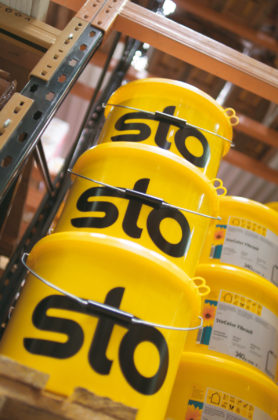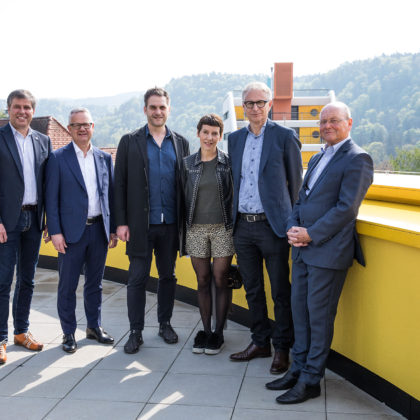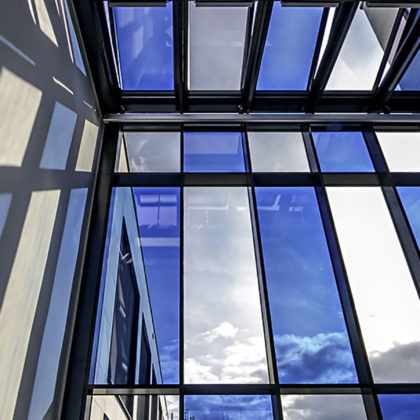Eight excellent system solutions
Mineral or organic, non-combustible overall structure, especially thin high-performance insulants: the right system is out there for every insulation task. This breadth of choice is essential because every building is different: the construction type and location factors have to be considered, as does construction legislation, and of course the client’s preferences must be taken into account as well. There are six criteria to consider when choosing an insulation system, and with eight different systems, Sto has the right solution for every requirement.
Insulating performance, ecology, cost-effectiveness, reliability, fire protection, and design freedom: all of these factors have a role to play when it comes to choosing an insulating system. How they are weighted is determined by the relevant standards (e.g. fire protection), the structural requirements of the building, as well as the building owner – for some people, a quick amortisation time is the key factor; for others, the appearance is more important. However the individual aspects are weighted and combined, the range of EWIS on offer is now so great that a suitable system is available for every situation. This becomes clear when the individual criteria are assessed in more detail.
Ecology
Every EWIS is eco-friendly! Over its lifetime, the energy balance of an EWIS will always be positive. “Energy amortisation times” for insulation systems based on polystyrene (EPS) are between five and 14 months, while mineral wool systems save the amount of energy used in their production in three to eight months. With a service life of several decades – according to the Fraunhofer Institute for Building Physics, the life expectancy of an EWIS corresponds to that of a “conventional wall structure with render” – it is clear that insulation systems are a real asset for the environment. For even higher ecological standards, there are insulants made from renewable resources available – systems with wood fibre insulation boards (such as StoTherm Wood), for example, are ideal for timber structures.
Reliability
Some facades have a hard life: they have to serve as “football goals” or withstand the harsh effects of weathering. In these cases, organic systems are an excellent choice. They provide maximum resistance against mechanical loads – in the case of StoTherm Classic, this is proven by the “simultaneous test”, the toughest test currently available for the resistance of a facade. If high fire protection requirements need to be met, there are non-combustible alternatives such as StoTherm Classic S1.
Cost-effectiveness
The requirements in terms of insulating performance, durability, fire protection, or design determine the choice of products and systems and, therefore, the costs. Sto products that can be applied using machine technology or that are supplied ready to use reduce the man hours required for application and, hence, the prices per square metre. To minimise weather-related delays in the transitional periods in spring and late autumn, Sto offers the “QuickSet technology (QS)” and “FastTrack technology (FT)” methods. The former ensures that organic coating structures set reliably even in cool weather conditions (> 1 C), while the latter does the same for mineral mortars.
Scope for design
Lots of people seem to think that insulated buildings lose their character and all look the same. In fact, the truth couldn’t be more different: the variety of textures and colour shades for renders is virtually endless, and then there are additional options such as brick, natural stone, classic or modern architectural elements, glass mosaic, or effect and textured coatings.
Since environmental protection measures have improved the air quality in Germany to such an extent that microbes are no longer killed by exhaust gases and emissions, algae and fungi are once again to be found on roofs and facades, just as they were in pre-industrial times. Natural defence measures can be used to prevent this growth without resorting to preservatives. Facade paints such as StoColor Dryonic or Lotusan use biomimetic methods inspired by nature for this purpose.
Insulating performance
In many cases, providing the desired thermal protection is a simple task. Wherever there is sufficient space, the insulant can simply be applied in the required thickness. At property boundaries or on buildings with a small roof projection, however, it may be that the additional layer is not permitted to exceed specified limits. In this case, the insulating performance of the insulant comes under scrutiny. EPS boards with thermal conductivity level (WLS) 032 provide around ten per cent better insulation than standard insulants with WLS 035. The insulating performance can be improved significantly with PIR rigid foam boards (WLS 024-026). Phenolic resin rigid foam boards (WLS 021-022) achieve the best possible insulation and are ideal for narrow spaces such as roof projections or balcony recesses.
Fire protection
In terms of fire protection, facade insulation systems are among the most highly studied building materials. Their approval vouches for their reliability. It goes without saying, however, that fire protection measures are to be observed in their entirety. In the case of standard EWIS with EPS insulation boards, necessary measures such as lintel protection or fire strips are to be implemented according to the system in question. In cases where only non-combustible building materials may be installed anyway (in buildings which exceed the high-rise level, for example), systems with mineral insulants are used.
 |
The Jena residential building by J Mayer H. Architects features custom-made insulation from the Sto range, which provides the right system solution and corresponding insulant for every requirement. The four buildings of the “Carl Zeiss” housing association are fitted with the non-combustible facade insulation system StoTherm Classic S1 and provide space for retailers and restaurants as well as 29 comfortable city apartments.
Photos: Christian Guenther Fotodesign, Leipzig / Sto SE &Co.KGaA
|
||
 |
The Jena residential building by J Mayer H. Architects features custom-made insulation from the Sto range, which provides the right system solution and corresponding insulant for every requirement. The four buildings of the “Carl Zeiss” housing association are fitted with the non-combustible facade insulation system StoTherm Classic S1 and provide space for retailers and restaurants as well as 29 comfortable city apartments.
Photos: Christian Guenther Fotodesign, Leipzig / Sto SE &Co.KGaA
|
||
 |
Reliable terms of reference: StoTherm Classic S1, StoTherm Mineral, StoTherm Cell, and StoTherm Wood have been awarded the “Blue Angel” eco-label by the German Federal Ministry for the Environment in recognition of their eco-friendly credentials.
|
||
 |
Maximum reliability: StoTherm Classic is the first system to undergo the FIBAG simultaneous test – heavy rain, mass hail, and storms.
|
||
 |
Quality on the facade: StoTherm Classic S1 was honoured with the “Plus X Award” innovation prize as the best product of 2013.
|
||
 |
The right system for every scenario.
|
||
Publication free of charge, specimen copy requested



